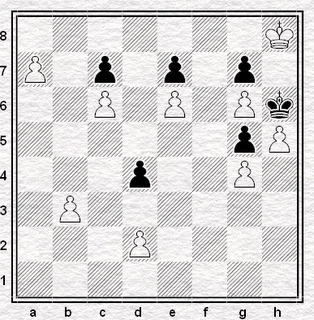
I spent yesterday in a deep dark corner of the Hampshire countryside - visiting my Mum; family anniversary - where only the woo of an owl might keep you from sleep - and, where the internet dare not reach. Still, as far as I could judge from Ceefax, I didn't miss much in game 3 of Kramnik's contest with both Deep Fritz and his own blunder-loving demons.
But in fact, playing through the moves of the game - 1.d4 Nf6 2.c4 e6 3.g3 d5 4.Bg2 dxc4 5.Qa4+ Nbd7 6.Qxc4 a6 7.Qc2 c5 8.Nf3 b6 9.Ne5 Nd5 10.Nc3 Bb7 11.Nxd5 Bxd5 12.Bxd5 exd5 13.0-0 Nxe5 14.dxe5 Qc8 15.Rd1 Qe6 16.Qd3 Be7 17.Qxd5 Rd8 18.Qb3 Rxd1+ 19.Qxd1 0-0 20.Qb3 c4 21.Qc3 f6 22.b3 Rc8 23.Bb2 b5 24.Qe3 fxe5 25.bxc4 Rxc4 26.Bxe5 h6 27.Rd1 Rc2 28.Qb3 Qxb3 29.axb3 Rxe2 30.Bd6 Bf6 31.Bc5 a5 32.Bd4 Be7 33.Bc3 a4 34.bxa4 bxa4 35.Rd7 Bf8 36.Rd8 Kf7 37.Ra8 a3 38.Rxf8+ Kxf8 39.Bb4+ Kf7 40.Bxa3 Ra2 41.Bc5 g6 42.h4 Kf6 43.Be3 h5 44.Kg2 ½-½ - that is not quite the case. Fritz had some pressure for a pawn, and then Kramnik found a neat way to liquidize to a drawn fortress endgame.
Which brings me on to something else. If you want to play through the above game or any game featured here, one good way to do it is download a programme called 'WinBoard.' WinBoard will allow you to copy and paste moves to play through games on your computer screen. Actually, it does a few more things besides that - but you can find that out for yourself. A link to its download and information site is in the sidebar to your left under 'Chess Downloads.'












